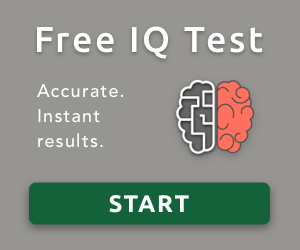The Stanford-Binet test
The Stanford-Binet intelligence scale, commonly referred to as the Stanford-Binet test, was developed in the first half of the 20th century by Lewis Terman by revising the Binet-Simon scale. It is still widely used today as both an assessment tool and as the foundation for various IQ tests and intelligence scales.
Alfred Binet and the origins of IQ tests
Alfred Binet was a French psychologist that is today known as the father of IQ tests. Born in 1857, Binet graduated from law school and studied science and psychology at the Sorbonne. His academic background led him to become a researcher at Salpêtrière Hospital, a well-known neurological clinic, and in 1891, he joined the Laboratory of Experimental Psychology at the Sorbonne as a researcher and later as a director from 1984 to 1911, the year of his death.
Interested in studying the psychology of children more scientifically, Binet set himself the task of developing a tool that could help measure intelligence. Working closely with the French Government, the goal was to identify kids with learning disabilities and later study how to help them improve their school results.
To this intent, Binet and Theodore Simon, his research associate, developed the Binet-Simon intelligence scale, considered to be the first IQ test in history.
The Binet-Simon intelligence scale
The Binet-Simon test is considered to be the precursor of IQ tests because it was the first to focus on memory and reasoning instead of learned subjects. It included items intended to assess problem-solving skills, short-term memory, the ability to follow instructions, and attention.
The IQ results would be achieved by comparing the mental age of the child and their chronological age. For example, a child with a mental age of 6 and a chronological age of 6 would have a score of 6.0.
To find the mental age, the researchers applied the test to children considered to have a normal mental cognitive development and noted down the questions that each age group was able to answer successfully. When the test was then administered to children believed to have a cognitive impairment or learning disability, their mental age was calculated by comparison to these notes.
As such, when taking the Binet-Simon test, a child would have a mental age of 6, for example, if they were able to answer all the questions that “normal” 6-year olds got right, but no more.
Despite being renowned for his advances in the study of intelligence, Binet was never satisfied with his work and was honest in pointing out the flaws in the Binet-Simon scale. He defended that his test was a feeble attempt to understand intelligence since this was so complex that it was virtually impossible to measure it quantitatively. He also argued that intelligence was not based only on genetics, and could be influenced by many environmental factors. For that reason, he suggested that his IQ test would be more precise if it was administered to children with the same background.
The Stanford-Binet intelligence scale
The Stanford-Binet test, as it is most commonly known, was developed in the early 20th century by Lewis Terman.
Terman, a psychologist at Stanford University (hence the Stanford in Stanford-Binet), revised the original Binet test by translating it to English from French and adapting some of the items to the American reality. He also changed the rating system by introducing the term quotient of intelligence (IQ) and the formula IQ = mental age / chronological age x 100, which made the results easier to read and compare.
Supported by the eugenics theory that was widely spread in the US at the time, the Stanford-Binet was promoted and became popular across the country being applied in schools and even in the military as a recruitment tool backed by the US Government.
The first Stanford-Binet test was published in 1916 and was subsequently revised. The second edition was published in 1932 and was revised by Terman and Maud Merrill to emphasize non-verbal questions and reduce the weight of memory recall as well as introduce a more objectified scoring method. The age range of the test was also increased to comprise kids from 1 and a half years of age to 18 years old.
The third edition, published by Merrill in 1960, introduced the use of deviation IQ. The fourth edition, published in 1986 and led by Robert Thorndike after Merrill’s retirement, adjusted the age of the Stanford-Binet intelligence scale to 2-23 years old and changed the structure of the test to 15 subtests.
The 5th Edition of the Stanford-Binet intelligence scale
The current version of the Stanford-Binet test was published in 2003 under the guidance of Gale Roid.
This revised version, also called SB5, can now be administered to children and adults alike, targeting individuals who are 2 to 82 years old. The test is divided into verbal and non-verbal domains and contains 10 subtests that assess short-term memory, fluid intelligence, visual-spatial reasoning, crystallized knowledge, and quantitative knowledge.
Furthermore, the SB5 edition is standardized, allowing for a more reliable measure of intelligence. The standardization used 4800 individuals of different ages, genders, races, ethnicities, socioeconomic levels, and geographic regions, in proportion to the numbers of the 2001 U.S. Census. Individuals highly gifted, as well as those with learning disabilities, were also included in the sample.
The Stanford-Binet continues to be one of the most commonly administered IQ tests nowadays as the 5th Edition introduced changes that solved many of the criticisms the previous versions faced. When administered by private, qualified psychologists, its scores are also accepted by many IQ societies, including Mensa.

